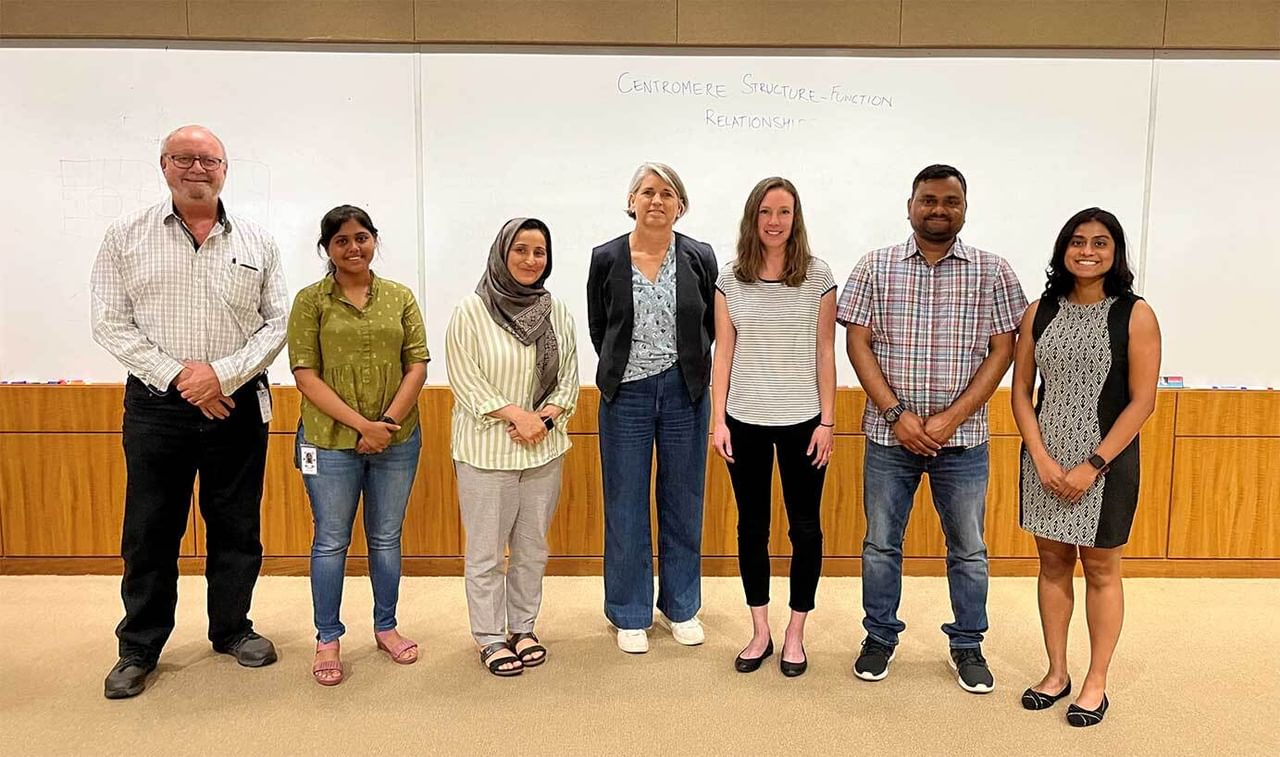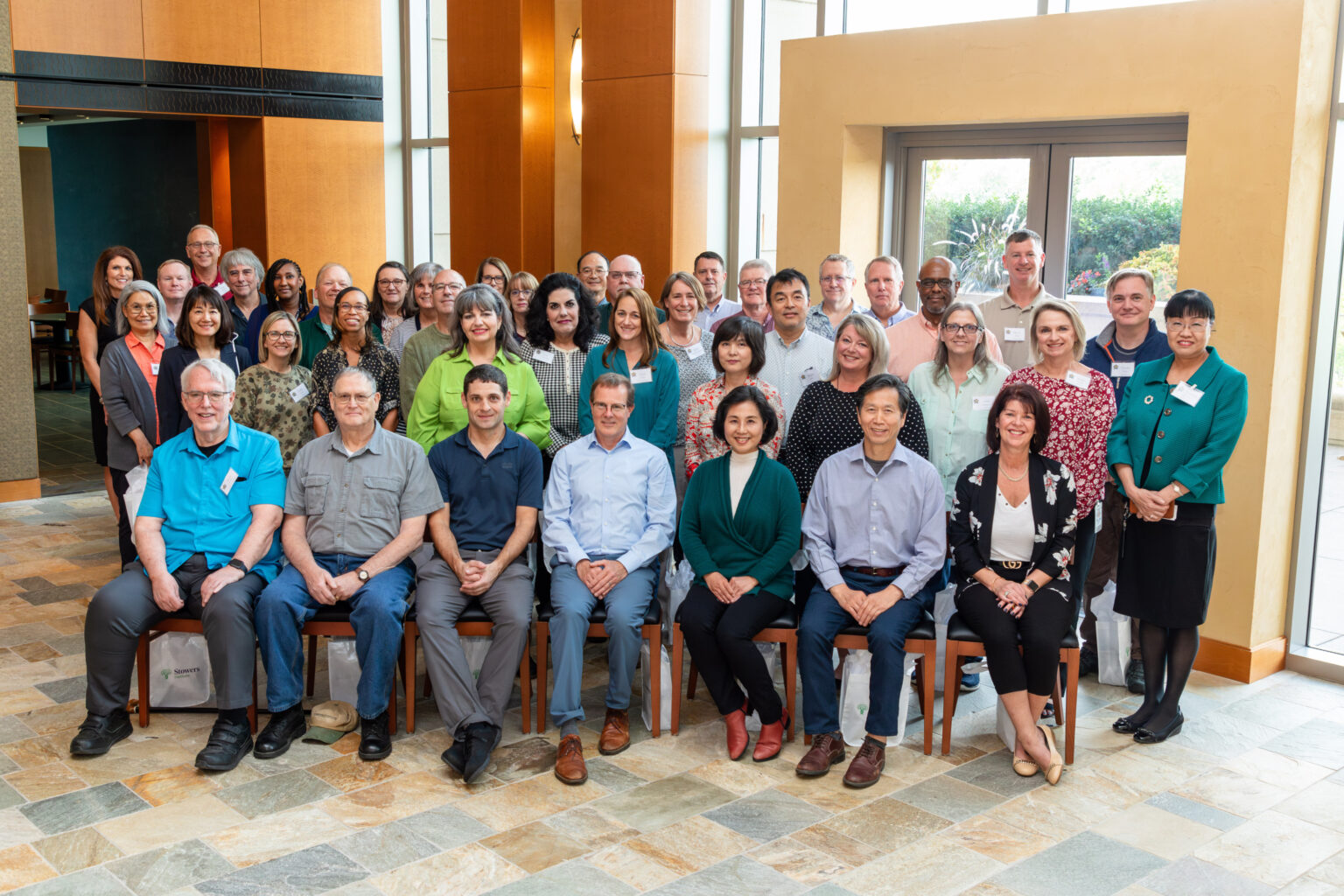News

24 June 2024
Stowers Faculty EDGE Workshop prepares postdocs for the academic job market
The Faculty EDGE series is just one of many advantages of the postdoctoral training program at the Stowers Institute.
Read Article
News
A key player is associated with many human cancers

Fluorescent microscopy image of wild type yeast cells (left) compared to mutant yeast cells lacking an important protein complex (SWI/SNF) that regulates sulfur metabolism. Sulfur gene transcripts (green) are overexpressed when the SWI/SNF complex is absent.
“You are what you eat” is often heard in the context of diet and nutrition, referring to connections between the types of food we consume and our state of health. At a cellular level, the interpretation is literal. Food is digested and parts of it, nutrients, are metabolized in cells to produce energy and molecular building blocks needed for cellular functions.
A new study from the Stowers Institute for Medical Research published online August 31, 2023, in Nucleic Acids Research explored the well-established yet complex relationship between metabolism and gene expression. The team sought to better understand how metabolites—the intermediate and end products of metabolism—influence gene activity and allow cells to respond to their nutritional environment, a process frequently disrupted in many types of cancer.
“Having a better understanding of the tools and signals that cells use to respond to their environment is a first step in being able to develop treatments for many diseases including cancer,” said Michael Church, Ph.D., first author of the study and a postdoctoral research associate in the laboratory of Stowers Investigator Jerry Workman, Ph.D.
“When you take in nutrients from food, after digesting it, your cells can use the basic components to mark or ‘paint’ your genome and its associated proteins, which can change how your genes are expressed,” explained Church. “In this way, your cells can respond appropriately based on which nutrients are available to them.”

Graphical illustration showing how a stimulus like a nutritional product of food metabolism, or a metabolite, can impact the state of the genome, which in turn governs how and when specific genes turn on or off.
To uncover more details of this process, the researchers focused on sulfur metabolism in the budding yeast, Saccharomyces cerevisiae, which has metabolic pathways very similar to human cells. Generally, when yeast cells are grown in an environment lacking sulfur-containing nutrients, specific genes are activated to make the sulfur-containing compounds they need. However, loss of a protein complex called SWI/SNF (pronounced “switch-sniff”) has an effect that has puzzled researchers for decades. Even in sulfur-rich environments, yeast lacking the SWI/SNF protein complex over-activate their sulfur genes.
The researchers used genetic and molecular approaches to examine the relationship between sulfur metabolism and the SWI/SNF complex, which is also frequently altered in cancer cells. They found that without SWI/SNF, cells could not properly express genes needed to produce an important sulfur metabolite, leading the cells to act as if they were starved for sulfur-containing nutrients.
“Our findings show that SWI/SNF is a regulator of a key point in sulfur metabolism. We discovered that our mutant cells were unable to form an accurate picture of their environment,” explained Church. “In this case, a regulatory protein wasn’t being ‘painted’ correctly, leading to widespread dysregulation, which shows the importance of switching genes on or off in response to the appropriate signals.”
One hallmark of cancer cells is reprogramming of the sulfur metabolic pathway, which the researchers investigated. “If we gain a better understanding of how these pathways are regulated at multiple levels, this may aid in identifying new therapeutic targets,” said Church.
Additional authors include Andrew Price and Hua Li, Ph.D.
This work was funded by the National Institute of General Medical Sciences of the National Institutes of Health (award R35GM11806) and institutional support from the Stowers Institute for Medical Research. The content is solely the responsibility of the authors and does not necessarily represent the official views of the NIH.
News

24 June 2024
The Faculty EDGE series is just one of many advantages of the postdoctoral training program at the Stowers Institute.
Read Article
News

17 January 2024
Q&A with Stowers Postdoc Michael Church: “When I got the opportunity to join the Workman Lab, I jumped at the chance.”
Read Article
News

06 October 2023
Forty-nine members reached 20 years of service at the Stowers Institute. The Institute founders, Jim and Virginia Stowers, envisioned establishing the Institute as a long-term investment for advancing foundational knowledge in biology for the benefit of all.
Read Article